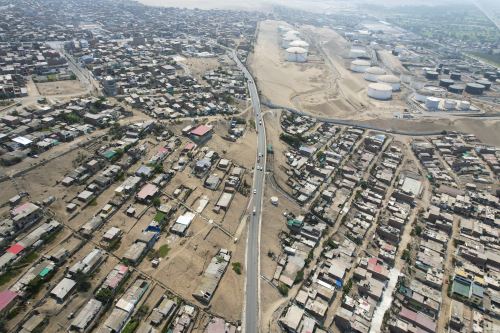By: Ivan CalderonChildren run and play in the sandy areas of Lomo de Corvina, while adults walk hurriedly to fulfill their daily duties. Probably very few of them are aware that this human settlement in Villa El Salvador (VES) district is classified as one of Lima's most vulnerable zones in the event of an 8.8-magnitude earthquake.
This village, located at the southwestern edge of the district, south of Lima, is the result of a series of informal settlements that began in 2002.
It owes its name to the characteristics of the terrain, which —due to its proximity to the sea— once featured fine sand dunes and slopes. Although many of these have since been covered by construction, the sand is still visible in many areas today.
But what makes this area so vulnerable to a potential major earthquake like the one expected in Lima due to over 279 years of seismic silence?
Engineer Miguel Estrada, lead researcher at the Peruvian-Japanese Center for Seismic Research and Disaster Mitigation (Cismid), explained.
In statements to Andina News Agency, Estrada indicated that this settlement in VES has very poor soil quality; it is also marked by widespread informal housing construction.
"Sandy soils and informal housing construction constitute two serious problems in this area of Lima; if an earthquake were to strike, the damage would be considerable," he warned.

Moreover, Estrada noted, in the event of that magnitude, water and sewage pipes in Lomo de Corvina would also collapse, causing the soil to turn to mud and the buildings to sink.
"The earthquake we are expecting would have a magnitude of 8.5 to 8.9, with a high probability of a tsunami since the event would occur on the ocean floor," he stated.
The engineer mentioned that other areas of Lima that would also be affected by poor soil quality include a part of La Molina, La Punta, Ventanilla districts, the Pantanos de Villa, and certain areas of Chorrillos district.
Alternatives
According to Estrada, not everything is lost in this area of Villa El Salvador.
The expert suggested as an alternative that residents of this settlement reinforce their homes, noting that even though they are built on soft soil, the structures can still be improved.
He clarified that it is indeed possible to build on this type of terrain, but doing so would require the use of more expensive structural elements.
"The softer the soil, the stronger the structure must be and, therefore, the higher the costs," Estrada emphasized.
The engineer recommended that Lomo de Corvina residents install metal mesh in the walls of their homes so they can better withstand the onslaught of a potential earthquake.
"This doesn't mean the home will become earthquake-proof; what we are aiming for is to reduce the building's vulnerability," he said.
However, Estrada mentioned that not all buildings can be reinforced, as some are so poorly built that the only alternative is to relocate the families to less dangerous areas.
Prevention
According to the Cismid expert, before building a house, it is essential to understand the type of soil, as this will determine which construction materials to acquire. Supervision by a construction expert should be mandatory to ensure the structure's strength.
Lastly, he noted that earthquake drills are important to help people know what to do before, during, and after an earthquake —especially for those living in poorly built or unplanned housing.

Editor's note: English version by Jhaen Miranda.
Published: 6/18/2025